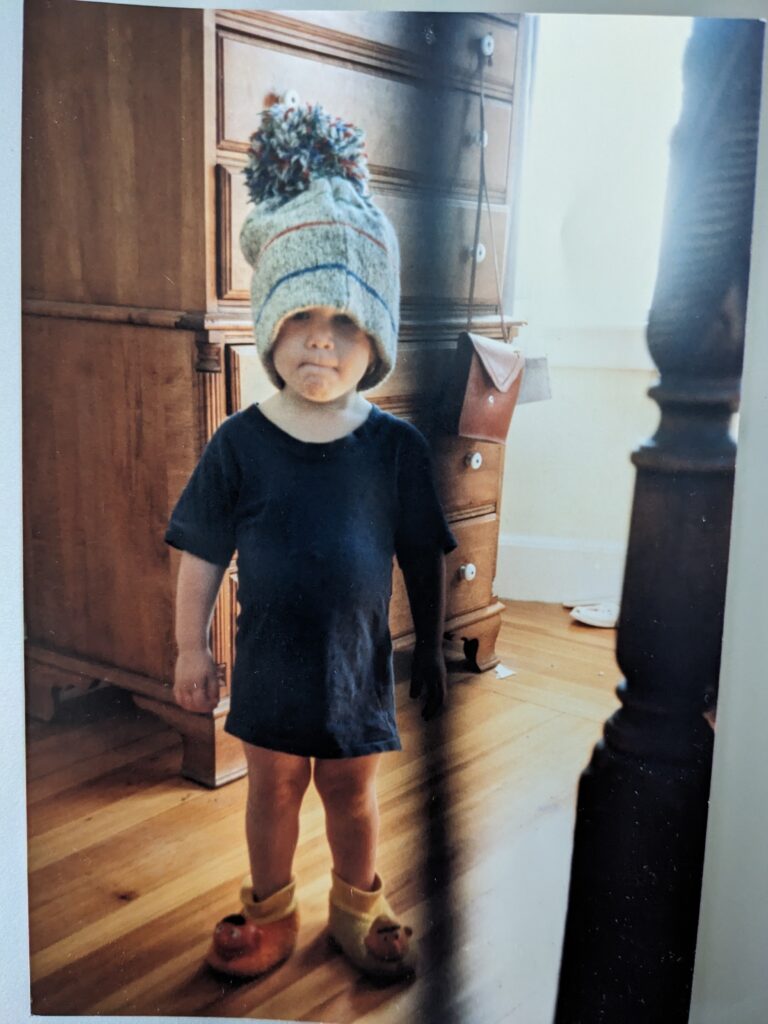Oh, those oranges arriving in the midst of the North Dakota winters of the forties—the mere color of them, carried through the door in a net bag or a crate from out of the white, winter landscape. Their appearance was enough to set my brother and me to thinking that it might be about time to develop an illness, which was the surest way of receiving a steady supply of them.
“Mom, we think we’re getting a cold.”
“We? You mean, you two want an orange?”
This was difficult for us to answer or dispute; the matter seemed moved beyond our mere wanting.
“If you want an orange,” she would say, “why don’t you ask for one?”
“We want an orange.”
“‘We’ again. ‘We want an orange.’ ”
“May we have an orange, please.”
“That’s the way you know I like you to ask for one. Now, why don’t each of you ask for one in that same way, but separately?”
“Mom . . .” And so on. There was no depth of degradation that we wouldn’t descend to in order to get one. If the oranges hadn’t wended their way northward by Thanksgiving, they were sure to arrive before the Christmas season, stacked first in crates at the depot, filling that musty place, where pews sat back to back, with a springtime acidity, as if the building had been rinsed with a renewing elixir which set it right for yet another year. Then the crates would appear at the local grocery store, often with the top slats pried back on a few of them, so that we were aware of a resinous smell of fresh wood, in addition to the already orangy atmosphere that foretold the season more explicitly than any calendar.
And in the broken-open crates (as if burst by the power of the oranges themselves), one or two of the lovely spheres would lie free of the tissue they came wrapped in — always purple tissue, as if that were the only color that could contain the populations of them in their nestled positions. The crates bore paper labels at one end —of an orange against a blue background, or of a blue goose against an orange background — signifying the colorful other world (unlike our wintry one) that these phenomena had arisen from. Each orange, stripped of its protective wrapping, as vivid in your vision as a pebbled sun, encouraged you to picture a whole pyramid like this in a bowl on your dining room table, glowing in the light, as if giving off the warmth that came through the windows from the real winter sun. And all of them came stamped with a blue-purple name as foreign as the other world that you might imagine as their place of origin, so that on Christmas day you would find yourself digging past everything else in your Christmas stocking, as if tunneling down to the country of China, in order to reach the rounded bulge at the tip of the toe which meant that you had received a personal reminder of another state of existence, wholly separate from your own.
The packed heft and texture, finally, of an orange in your hand —this is it! —and the eruption of smell and the watery fireworks as a knife, in the hand of someone skilled, like our mother, goes slicing through the skin so perfect for slicing. This gaseous spray can form a mist like smoke, which can then be lit with a match to create actual fireworks, if there is a chance to hide alone with a match (matches being forbidden) and the peel from one. Sputtery ignitions can also be produced by squeezing a peel near a candle (at least one candle is generally always going at Christmastime), and the leftover peels are set on the stovetop to scent the house.
And the ingenious way in which oranges come packed into their globes! The green nib at the top, like a detonator, can be bitten off, as if disarming the orange, in order to clear a place for you to sink a tooth under the peel. This is the best way to start. If you bite at the peel too much, your front teeth will feel scraped, like dry bone, and your lips begin to burn from the bitter oil. Better to sink a tooth in this greenish or creamy depression, and then pick at that point with the nail of your thumb, removing a little piece of the peel at a time. Later, you might want to practice to see how large a piece you can remove intact. The peel can also be undone in one continuous ribbon, a feat which maybe your father is able to perform, so that after the orange is freed, looking yellowish, the peel, rewound, will stand in its original shape, although empty.



